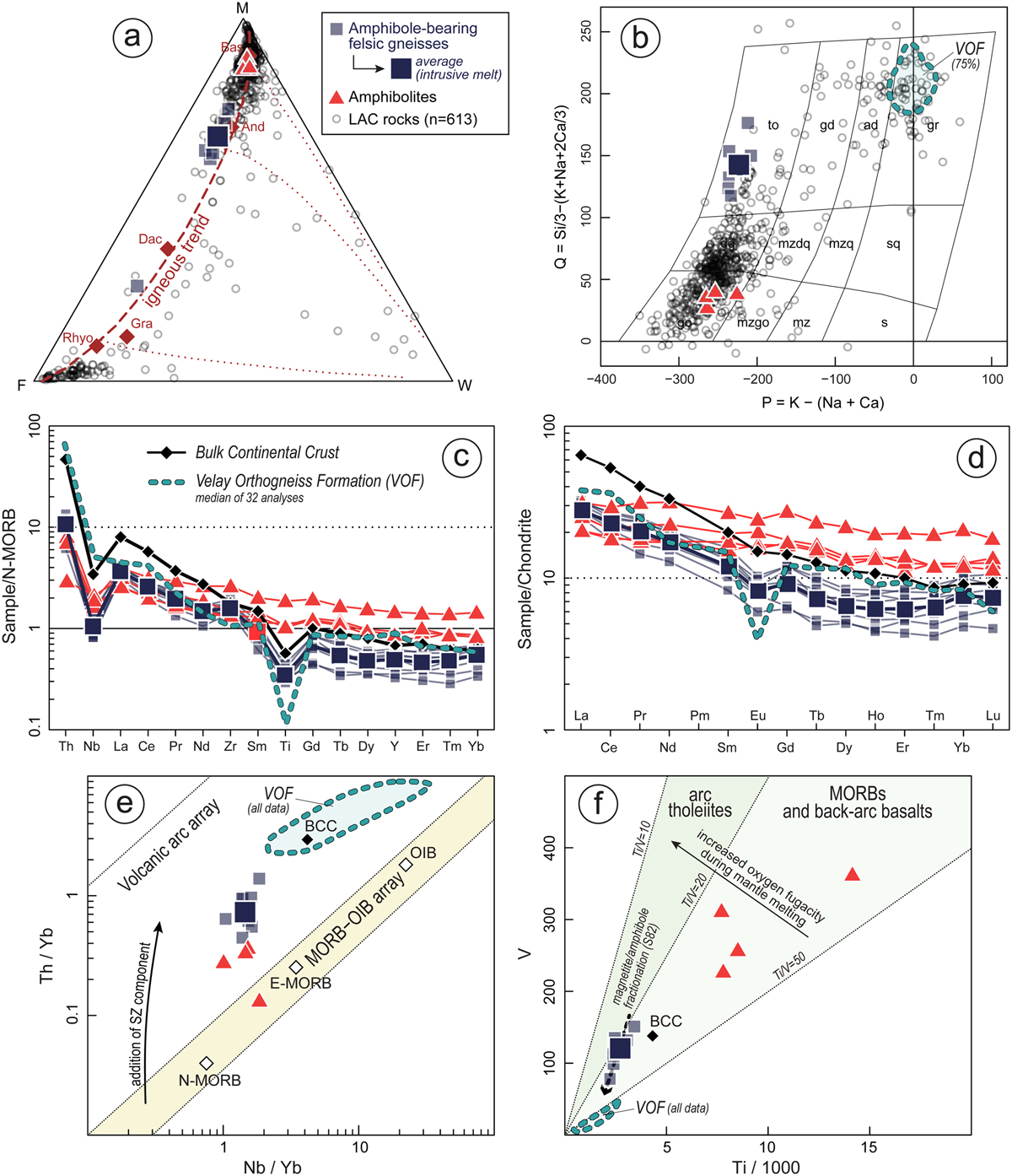Fig. 4

Download original image
Whole-rock geochemical data of the Riverie felsic gneisses and amphibolites. (a) FMW diagram of Ohta and Arai (2007) demonstrating the igneous origin of felsic gneisses. The M and F values characterize mafic and felsic rock sources, respectively. The W value quantifies the degree of weathering. The references of data for (presumably) meta-igneous from “Leptynite-Amphibolite Complexes” are available in the Supplementary Text. (b) P–Q classification diagram of Debon and Le Fort (1983). The dotted lines represent the contour encompassing 75% of the data (n=75) for the Velay orthogneiss formation, a coeval (meta)igneous suite from the parautochtonous terrains (Couzinié et al., 2017). (c) Incompatible, immobile element patterns of the Riverie meta-igneous rocks normalized to the composition of NMORBs (Sun and McDonough, 1989). (d) Chondrite-normalized (Boynton, 1984) Rare Earth Elements patterns. (e) Th/Yb vs. Nb/Yb diagram of Pearce (2008). Oceanic rocks plot within the MORB–OIB array. Magmas contaminated by the continental crust during ascent or which mantle source incorporated a slab-derived (SZ) component plot in the volcanic arc array. (f) V–Ti diagram of Shervais (1982). This diagram highlights the effects of the change in Vanadium redox state when the mantle is metasomatized by slab-derived fluids. Vanadium becomes more incompatible and resulting magmas exhibit high V/Ti ratios. The magnetite + amphibole fractionation trend is from Shervais (1982). Data for the Bulk Continental Crust are from Rudnick and Gao (2003).
Données géochimiques des roches totales des gneiss et amphibolites de Riverie. (a) Diagramme FMW démontrant l’origine ignée des gneiss. (b) Diagramme de classification P-Q de Debon et Le Fort (1983). (c) Profils d’éléments incompatibles normalisés à la composition des N-MORB. (d) Profils de terres rares normalisés aux chondrites. (e) Diagramme Th/Yb vs. Nb/Yb de Pearce (2008). Les roches océaniques se situent dans le domaine MORB-OIB. Les magmas contaminés par la croûte continentale lors de leur mise en place ou dont la source mantellique a incorporé un composant dérivé de la plaque subduite se situent dans le domaine des arcs volcaniques. (f) Diagramme V-Ti de Shervais (1982).
Les statistiques affichées correspondent au cumul d'une part des vues des résumés de l'article et d'autre part des vues et téléchargements de l'article plein-texte (PDF, Full-HTML, ePub... selon les formats disponibles) sur la platefome Vision4Press.
Les statistiques sont disponibles avec un délai de 48 à 96 heures et sont mises à jour quotidiennement en semaine.
Le chargement des statistiques peut être long.




